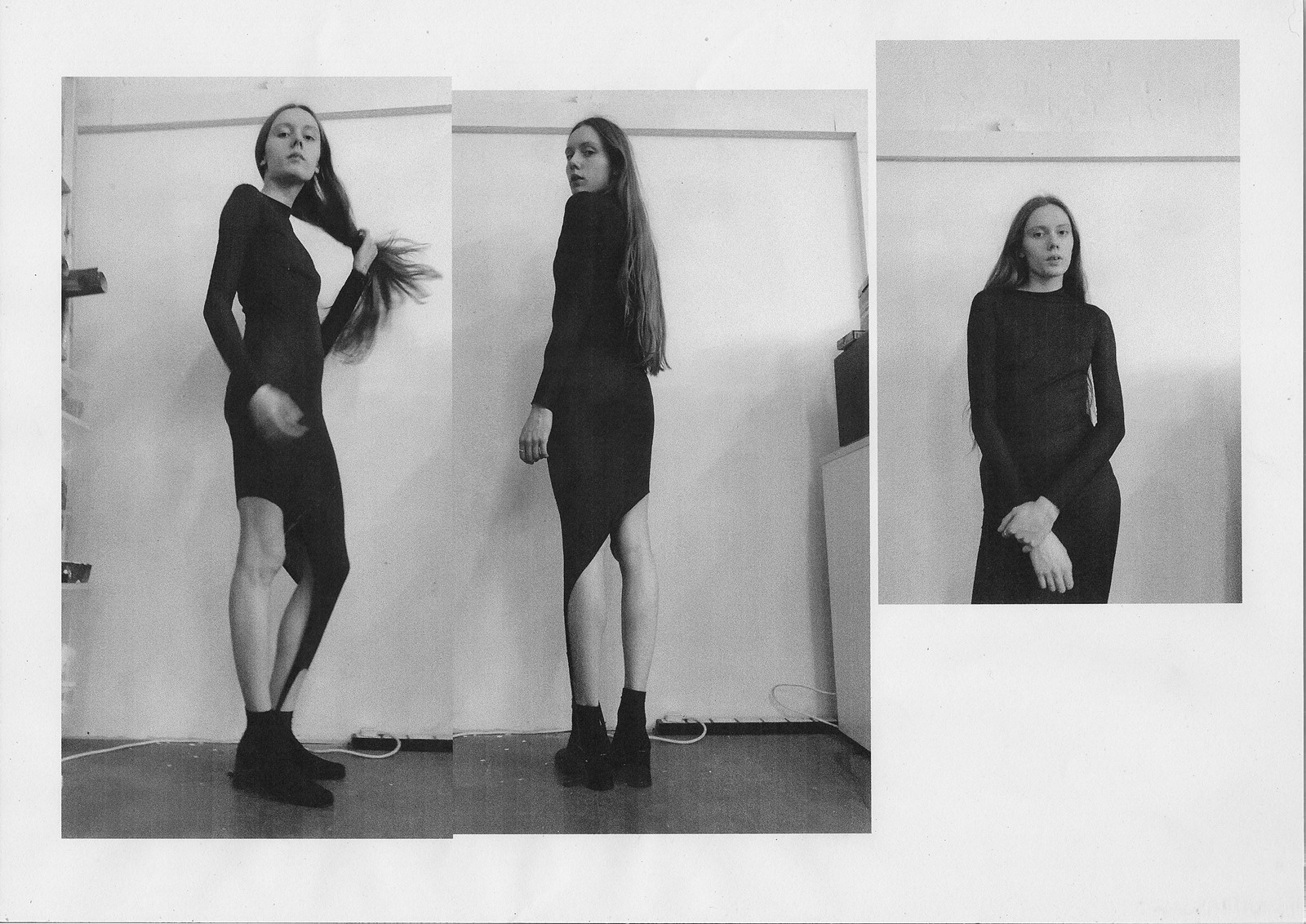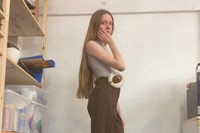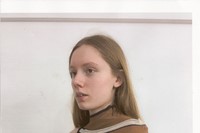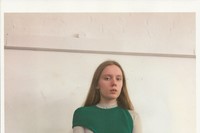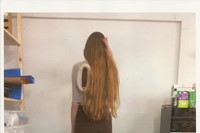AnOther has partnered with 1 Granary to create a series of Emerging Talent pieces, celebrating some of the most exciting upcoming creatives working in fashion design today.
Laura Newton – a recent Central Saint Martins MA Fashion graduate – sees great importance in keeping her work processes predominantly spontaneous. If an idea transforms into a wearable object, then it’s a success. If not, the result of experimentation is considered to be equally as valid, taking the form of a piece of jewellery or a wall-hanging. That does not mean commercial viability has to be ignored, however; far from it, for Newton will launch her namesake label this autumn. Being able to tell peronal stories, and sell clothes without compromising integrity and brand identity is vital, as is keeping her work firmly rooted in reality.
“I’m interested in our daily interactions with what we wear,” Newton says of the way that a garment wears out, stretches and folds with use. “This serves as a constant undercurrent in my work, even though it might not be immediately obvious upon looking at it. I feel there is a sincerity in exploring familiarity, rather than looking to faraway concepts to inform your work, that may not even be relatable.” What matters most to Newton is the visceral quality of fabrics, and an ability to create sensory experiences through craft-based processes. “Knit has the ability to do that,” she says of her favoured discipline, “because it is so affected by the human hand.”
The materials that the emerging designer chose to explore in her graduate collection lend themselves to embracing the contours of the body; matte viscose, cotton and lycra meet with sculptural birchwood inserts, referencing the trees cultivated in her native New Zealand. Maintaining close proximity between skin and fabric is a central concept in her design. “I have a few pieces that belonged to my mother before she sadly passed away when I was a child,” Newton explains. “A jacket, a woollen cardigan, a robe. I’d never wear them, so they sit pretty strangely in my wardrobe as ornaments. Clothing is close to our skin on a daily basis, and having these pieces of hers makes me feel close to her in a way. The physicality of them transcends what you can get from just looking at a photo. I believe that clothing – even when uninhabited by a body – can tell us so much about personal histories. They’re storytelling vehicles essentially, and that’s why I hold onto them as objects, and also feel so drawn to making them myself.”
“I believe that clothing – even when uninhabited by a body – can tell us so much about personal histories” – Laura Newton
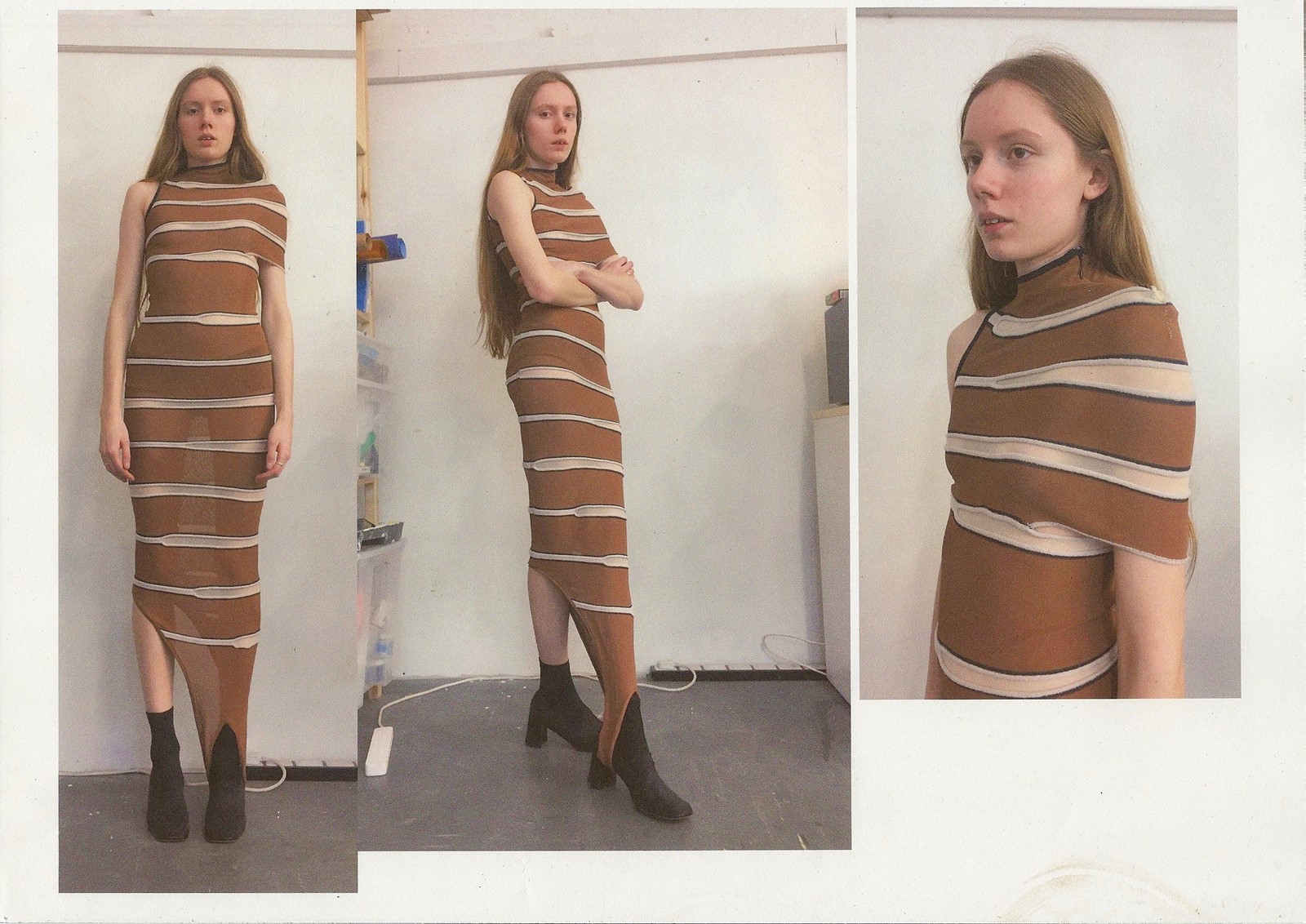
And indeed, what Newton sets out to create is garments that withstand the test of time. This shines through in her choice of yarns, working with deadstock overruns from European factories. “They are the luxury materials from Italy and so on, but you get them at a fraction of the price. I like working in this way, because it utilises waste material. And due to the nature of supply, you might work with something unexpected, or it can inform colour choice, or combinations that you might not have thought of.” She admits that this method feels more fitting for her brand, embodying Newton’s own idea of luxury fashion. “The quantities are modest. I like the experience of going and finding the yarns myself. I don’t want to lose that physical relationship I have with my product, even though I will be expanding as a brand.”
“I like the experience of going and finding the yarns myself. I don’t want to lose that physical relationship I have with my product, even though I will be expanding as a brand” – Laura Newton
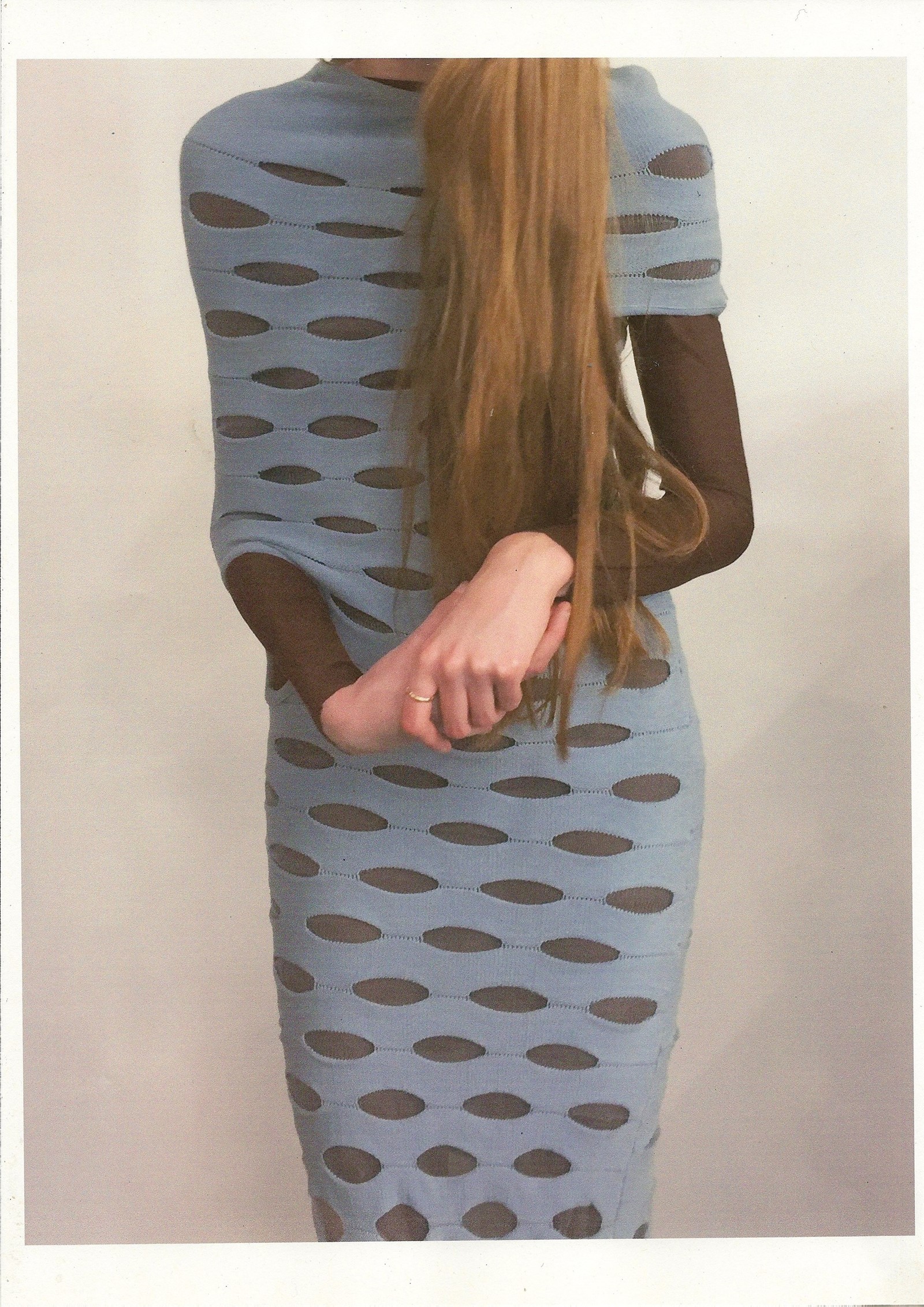
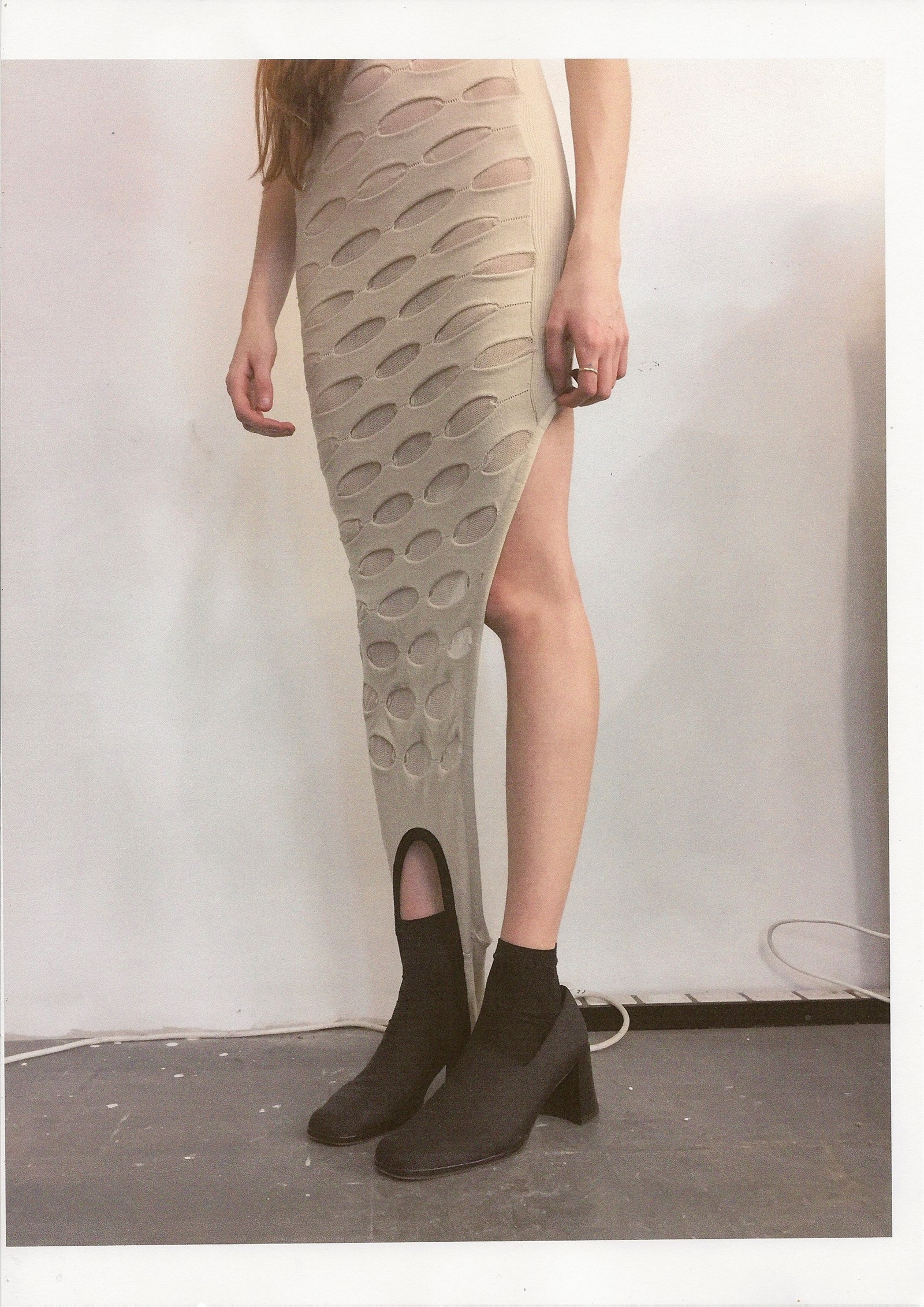
With a focus on sustainability, the everyday, craft and exploring individual histories, Newton’s work possesses the kind of integrity that you would hope to see from an emerging designer in 2017 – a refreshing antidote to throwaway and impersonal fashion. “If I went through my wardrobe and kept just the things I actually wore, or that I found sentimentally valuable, it would be such a small percentage,” she says. “It goes for anything, though; the less materialistic stuff you fill your life with, the more you appreciate what you have.” Simultaneously modest and ambitious, her future objectives are clear. “I have an interest in making knitwear that people really want to keep for years to come.” We predict that Newton’s tactile designs will be cropping up in the fashion archives of the future – they are clothes that are here to stay.
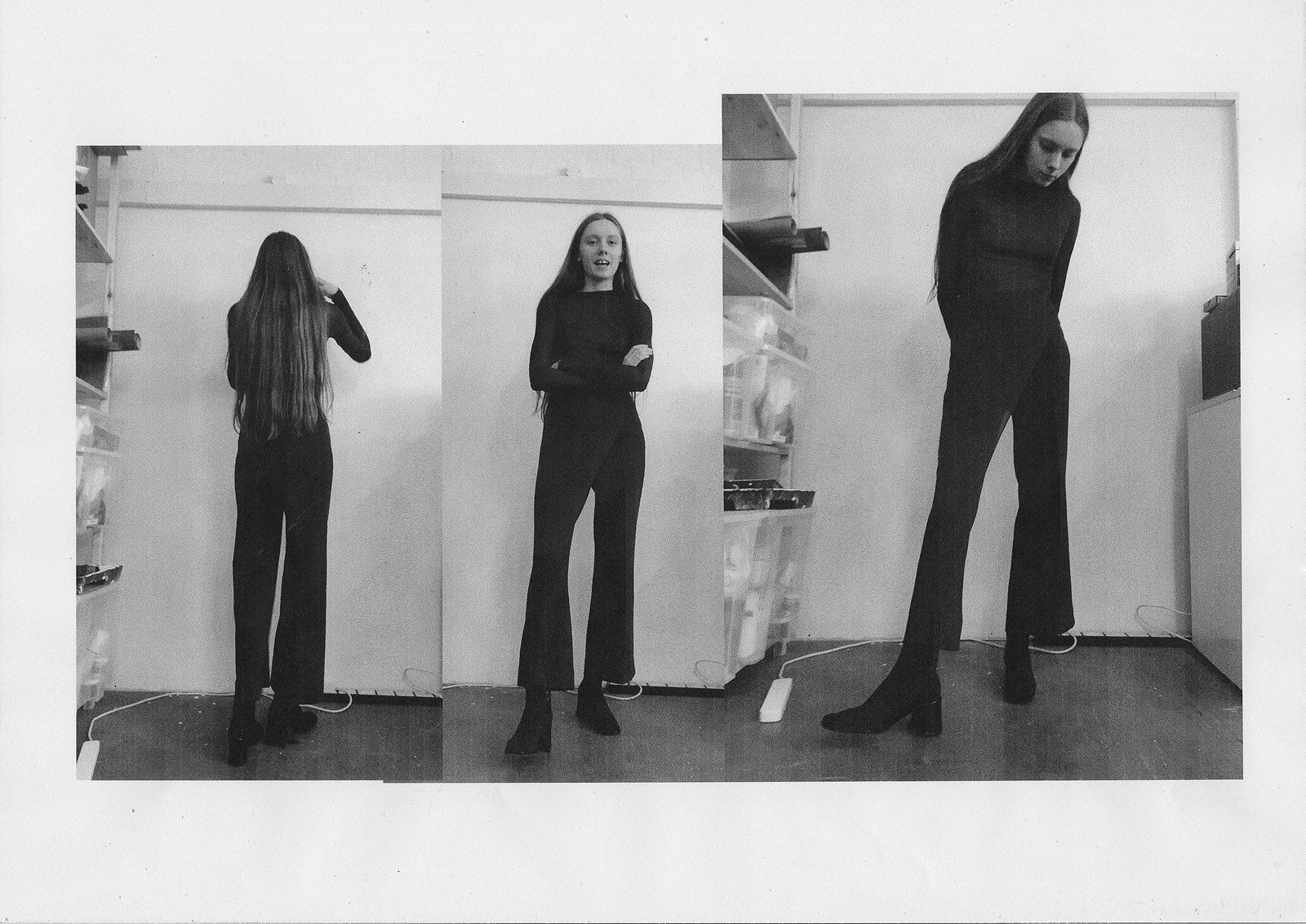
Model Isobel Whalley Payne
